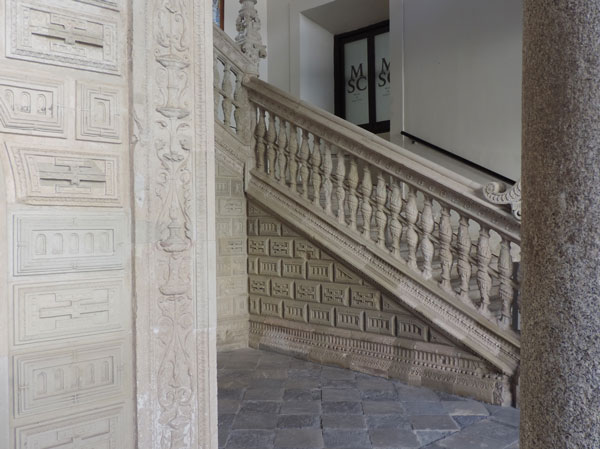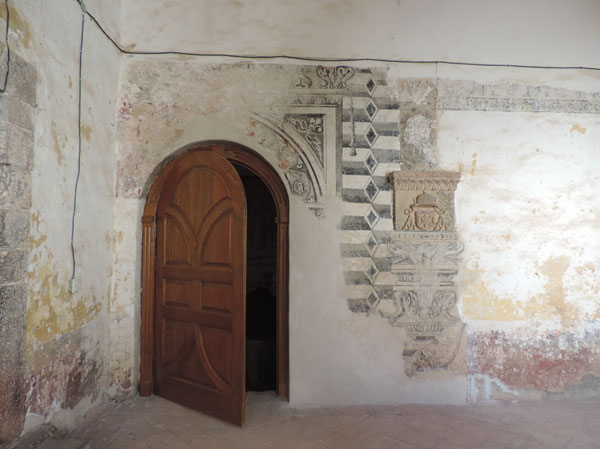My dissertation addresses architectural ornament in Mexico’s sixteenth-century mendicant monasteries. It is concerned specifically with a mode of illusionistic painting which is characterized by the simulation of architectural elements and the rendering of intricate geometric motifs in fresco and tempera murals. My dissertation research to date has been based in Mexico, where I have conducted on-site research at sixty monasteries. A 2016 De Montêquin Junior Fellowship enabled me to extend my inquiry to Spain where I explored the corollary traditions of architectural adornment that emerged in the fifteenth and sixteenth centuries. I conducted research in Spain in November, 2016, in Madrid, Toledo, Jaén, Granada, and Seville. Fieldwork in Spain allowed me to consider the Mexican example in relation to the traditions of ornament in sixteenth-century Iberian architecture, and clarify the influence of Renaissance architectural theory on the architecture of the transatlantic Habsburg Empire more broadly.

Figure 1. Enrique Egas and Alonso de Covarrubias. Hospital of Santa Cruz, Toledo, Spain, after 1515. Detail of Lower Cloister Stairwell. Photograph by Savannah L. Esquivel.
Two research questions shaped my project: What was the role of the architectural treatise in the embellishment of Spanish buildings in the sixteenth century? How were systems of ornament in Spain points of departure for the fresco ornament of Mexico’s monasteries? A major highlight of my research was the close study of the stairwell at the Hospital of Santa Cruz, Toledo (after 1515) by Enrique Egas and Alonso de Covarrubias (Fig. 1). At the Hospital of Santa Cruz, Egas and Covarrubias turned to architectural adornment as a site for integrating the multiple architectural idioms at play in Iberia. I would argue that ornament was a powerful and productive site for the integration of disparate stylistic systems in early-colonial Mexico as well. The decorative stonework at the Hospital of Santa Cruz evokes the mode of painted rustication that I have studied in the Augustinian monasteries of Mexico, such as the impressive stairwell at Atotonilco El Grande in the state of Hidalgo (Fig. 2). While I have investigated how fresco imitates the textures and stereotomy of courses of carved stone in Mexico, fieldwork in Spain offered an opportunity to study the style of decorative stonework artists in Mexico may have been imitating in the fresco adornment of the mendicant monasteries.

Figure 2. Monastery of San Augustín, Atotonilco El Grande, Mexico, ca. 1560. Detail of Upper Cloister Stairwell Portal. Photograph by Savannah L. Esquivel.
A study of ornament in sixteenth-century Mexican architecture contributes not only to the history of Renaissance architecture but also to a greater understanding of the global communication of aesthetic ideas during the sixteenth century. I am grateful for the support of the 2016 De Montêquin Junior Fellowship and the opportunity to pursue dissertation research in Spain.
Savannah Esquivel is a PhD candidate in the Department of Art History at the University of Chicago.